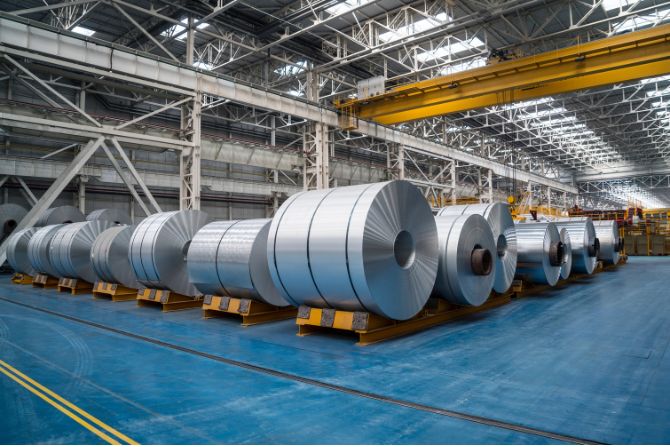
Mexico-US trade tariffs 2025 are a major concern for exporters, as new tariff policies on steel, aluminum, and auto exports create uncertainty in cross-border trade. While Mexico has secured a temporary tariff exemption, questions remain about the long-term impact on key industries and the stability of the USMCA trade agreement.
This article explores the latest developments in Mexico-US trade negotiations, how tariffs affect major industries, and what strategies exporters can adopt to mitigate risks and stay competitive in 2025.
Table Of Contents
- Mexico and the U.S.: A New Trade Battle
- Steel and Aluminum: A Targeted Industry
- Automotive Industry: A Temporary Relief
- The USMCA: A Key to Stability
- Outlook and Strategies for Exporters
- FAQs: Mexico-US Tariffs & Trade Impact
- Conclusion
Mexico and the U.S.: A New Trade Battle
The Mexican government is currently in negotiations with the United States to prevent the imposition of new tariffs on steel and aluminum. Marcelo Ebrard, Mexico’s Secretary of Economy, has argued that these tariffs are unjustified since Mexico imports more steel and aluminum from the U.S. than it exports.
President Donald Trump has justified the tariffs as a means to reduce the U.S. trade deficit. However, a temporary exemption until April 2 has given Mexico time to strengthen its position in trade negotiations.
Steel and Aluminum: A Targeted Industry
The tariffs imposed by the U.S. could significantly impact the steel and aluminum sector, increasing production costs and reducing competitiveness.

The Mexican steel industry faces challenges due to new US trade tariffs in 2025.
| Impact on the Steel & Aluminum Industry | Consequences for Mexico |
|---|---|
| Higher costs due to tariffs | Lower profit margins |
| Reduced competitiveness | Companies seek alternative markets |
| Possible exemptions under USMCA | Increased exports under tariff-free trade |
Ebrard noted that currently, over 50% of Mexico’s exports are made under USMCA provisions, and this number could rise to 85-90% in the coming weeks, reducing the impact of tariffs.
Automotive Industry: A Temporary Relief
The automotive industry is one of Mexico’s key economic drivers, accounting for 80% of exports to the U.S.. Trump’s decision to grant a 30-day tariff exemption on auto imports has given the industry a short-term breather.

Mexico’s automotive industry, a key driver of exports, faces uncertainty due to US trade tariffs in 2025.
📌 Key Data on Mexico’s Automotive Industry
- In 2024, Mexico produced 3.7 million vehicles, of which 2.7 million were exported to the U.S.
- General Motors exported 93% of its production in Mexico, shipping over 830,000 units to the U.S.
- Ford and Stellantis also heavily rely on the American market.
Before the exemption was announced, the National Auto Parts Industry (INA) warned that the tariffs could add $30 billion annually in extra costs and lead to the potential loss of 500,000 jobs.
The USMCA: A Key to Stability
The USMCA (United States-Mexico-Canada Agreement) has been crucial in maintaining trade stability between the three North American countries. Under this agreement, Mexico exports over $505 billion annually to the U.S., while American imports from Mexico total $334 billion per year.
The tariff reprieve has been seen as a win for the USMCA, but it also serves as an opportunity for Mexico to strengthen its position in the upcoming renegotiation of the agreement, scheduled for July 2026.
Outlook and Strategies for Exporters
Given this uncertain trade environment, exporters must prepare for different scenarios.
📌 Key Strategies for Exporters:
✅ Optimize logistics processes: Reduce transportation costs and improve supply chain efficiency.
✅ Leverage USMCA benefits: Ensure compliance with origin rules to avoid tariffs.
✅ Diversify markets: Explore opportunities in Europe, Asia, and Latin America.
✅ Strategic negotiations: Stay informed on evolving trade policies and adjust export strategies accordingly.
FAQs: Mexico-US Tariffs & Trade Impact
1. What tariffs has the U.S. imposed on Mexican exports?
The U.S. government recently imposed tariffs on Mexican steel and aluminum imports. However, Mexico secured a temporary exemption until April 2, 2025, allowing time for negotiations under the USMCA trade agreement.
2. How do tariffs on steel and aluminum affect Mexican exports?
Tariffs increase the cost of production, reduce profit margins, and make Mexican exports less competitive in the U.S. market. However, many companies are shifting to USMCA-compliant trade routes to avoid these tariffs.
3. What impact do these tariffs have on the Mexican automotive industry?
The Mexican automotive sector exports 80% of its production to the U.S., making it highly vulnerable to tariffs. A temporary 30-day exemption has provided relief, but if tariffs are applied, costs could rise by $30 billion annually, affecting pricing and jobs.
4. Will Mexico renegotiate the USMCA agreement?
Yes. The USMCA is scheduled for review in July 2026. The recent trade tensions with the U.S. may accelerate discussions on tariff regulations, supply chain adjustments, and market stability.
5. What strategies can exporters use to avoid tariffs?
✅ Leverage USMCA benefits: Ensure compliance with rules of origin to qualify for tariff exemptions.
✅ Optimize supply chains: Reduce shipping costs and improve logistics efficiency.
✅ Diversify trade partners: Explore markets in Europe, Asia, and Latin America to reduce dependence on the U.S.
✅ Monitor trade policies: Stay updated on tariff changes to adjust export strategies proactively.
6. How will the temporary tariff exemption impact the Mexican economy?
The 30-day reprieve has stabilized markets in the short term. Mexico’s $839 billion annual trade relationship with the U.S. remains intact, but continued tariff threats could slow economic growth and impact foreign investments.
7. How does this tariff situation affect international logistics?
Logistics companies must adapt quickly to new trade conditions. Companies like ILS Company help exporters navigate regulatory changes, optimize shipments, and reduce costs to maintain smooth cross-border trade.
Conclusion
The trade battle between Mexico and the U.S. is far from over. However, the recent tariff reprieve has given exporters a short-term opportunity to adjust their strategies and enhance competitiveness.
The automotive, steel, and aluminum industries remain at the center of trade negotiations, so companies must be prepared for further regulatory shifts.
🚛 Looking to optimize your international logistics? At ILS Company, we help you manage your exports efficiently and cost-effectively. Contact us today for a customized solution!


